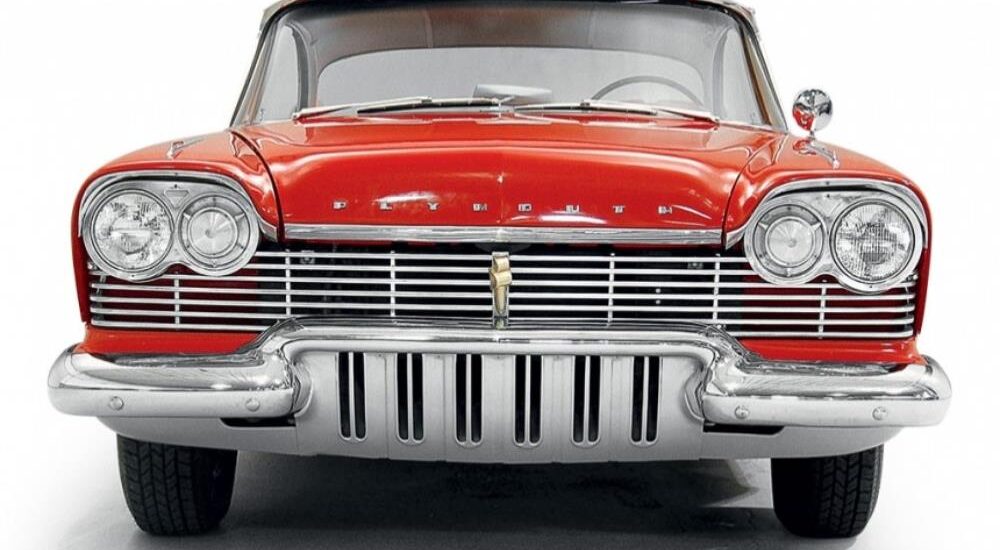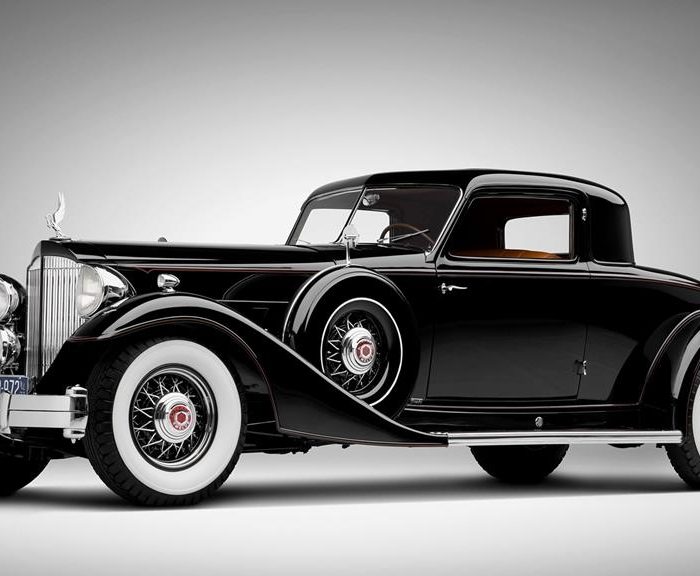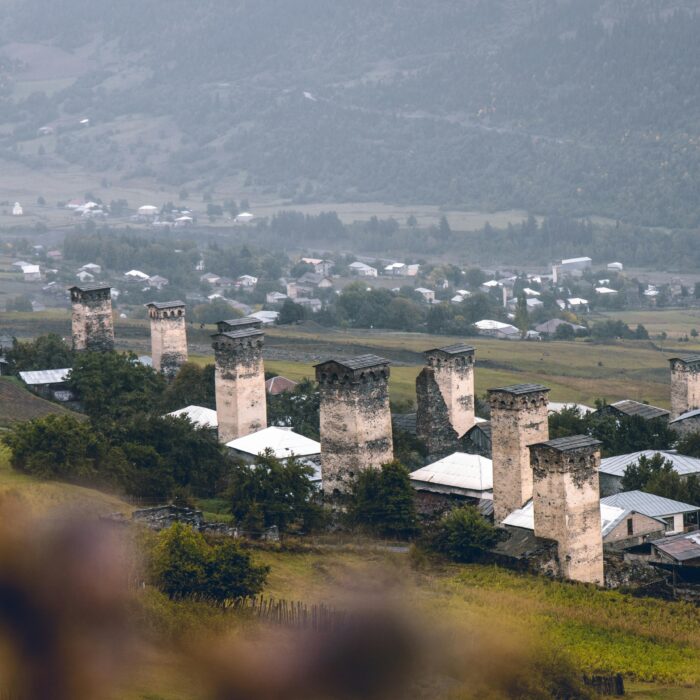Non, il ne s’agit pas de la tristement célèbre voiture du film populaire connu sous le nom féminin «de Christine». Cette voiture était un modèle datant d’un an plus tard, habillée de manière plus luxueuse, et entièrement issue de la fiction. Stephen King, l’auteur du roman qui a inspiré le film, n’était pas un grand connaisseur des voitures. Il a écrit son livre en commençant par le milieu, n’ajoutant le début, la fin et de nombreux détails que plus tard, ce qui a donné un véhicule plus fantaisiste que réel. Mais la ressemblance est là…
1957 Plymouth Savoy KP-31-2 Sport Coupe
«Tu lui ressembles, comme une sœur, mais, bien sûr, tu n’es pas elle, malheureusement.» — Maxim Leonidov
Stephen King a révélé dans une interview qu’il cherchait une voiture à l’apparence frappante pour le personnage principal de son premier roman «automobile», qui n’avait pas encore atteint le statut de livre «culte» auprès des lecteurs américains. C’est pourquoi il a écarté une Chevrolet de 1957 qu’il jugeait «trop légendaire». Son choix s’est porté sur la Plymouth Fury, principalement en raison de son nom, qui correspondait parfaitement à la beauté malveillante qu’il imaginait.

Le modèle 1957 est facilement reconnaissable à ses phares de diamètres différents et à ses fentes verticales sous le pare-chocs. Moins évident, l’élément décoratif vertical au centre de la fausse calandre – une image très stylisée des voiles du Mayflower, le bateau des pèlerins américains – est lui aussi un trait caractéristique des véhicules Plymouth de 1957.
King a peut-être choisi la bonne voiture et, ce faisant, l’a involontairement élevée au rang de voiture culte, surtout après la sortie du film. Cependant, la Plymouth Fury décrite dans son roman n’existait pas et ne pouvait pas exister dans la réalité. Notamment, en 1957 et 1958, le modèle Fury n’était disponible qu’en version deux portes, la plus chère de sa série, et uniquement en beige clair. Ceci est pertinent si l’on considère la couleur de carrosserie « Red Autumn » fréquemment mentionnée dans le roman et montrée dans le film. Bien sûr, tout propriétaire mécontent pouvait repeindre sa voiture, mais dans le film, le véhicule est représenté sur la chaîne de montage avec une livrée rouge et blanche. Pour créer cette représentation erronée, les réalisateurs ont construit une chaîne de montage massive dans une usine de meubles désaffectée, car il n’était pas possible de tourner dans l’usine Chrysler, et l’équipement avait été modernisé depuis longtemps – le film a été tourné en 1983, après tout.



La banquette avant est spacieuse et confortable, mais n’offre aucun soutien latéral (et d’où viendrait-il?). Le tableau de bord comporte trop d’indicateurs pour qu’on puisse les comparer avec des «yeux de chat». Le bouton de sélection de la boîte de vitesses, situé à gauche du volant, n’a pas de position «Park».
Nos illustrations présentent non pas la Fury, mais la Savoy, plus économique, qui était disponible en rouge et blanc en 1957, et non en 1958, comme l’indiquent plusieurs éléments spécifiques du design de la face avant. Pour la couverture de l’édition de son premier livre, King a posé à côté d’une telle voiture, alors que le récit traite d’un véhicule complètement différent!
Eh bien, «vous lui ressemblez, comme une sœur» – il est facile de les confondre…» Cependant, au fur et à mesure que l’auteur poursuit sa description de la «voiture au mauvais caractère», il accumule les absurdités, démontrant son manque de familiarité avec le sujet et compliquant finalement le récit au point de le rendre impossible à filmer. Prenons la scène dramatique où la voiture verrouille soudain toutes ses portes de manière autonome – une fonction généralement activée à partir de la porte du conducteur, qui n’était pas disponible sur ce modèle. King décrit un cliquetis dramatique lorsque des «soldats» s’abattent simultanément sur les portières. Comment cela a-t-il pu être filmé alors que les voitures Plymouth n’étaient pas équipées d’une telle fonction à l’époque? Pour bloquer une porte, il suffisait de pousser la poignée vers l’intérieur, un mécanisme qu’il fallait tirer pour déverrouiller. Les réalisateurs ont dû mettre en scène ces «soldats» sur une marque de voiture complètement différente pour créer un effet émotionnel. Quel levier et quel «hydromatic» sur un véhicule Chrysler, alors qu’il s’agit de caractéristiques propres à General Motors ou à certains modèles Ford dans des circonstances d’urgence? Les transmissions de Chrysler s’appelaient Turboflite et étaient commandées par un panneau de boutons soigné situé sous la main gauche du conducteur, sans position de «parking». En fait, King aurait eu intérêt à parcourir les vieilles brochures de Plymouth pour obtenir un semblant d’exactitude. Au lieu de cela, il a fini par créer une chimère avec un moteur peu clair, une transmission étrangère et des caractéristiques telles que des poignées de porte à bouton (similaires à celles d’une Volga GAZ-21 qui n’a été introduite qu’en 1962) et deux portes supplémentaires.



Même sur les modèles Plymouth 1957 les moins chers, les garnitures intérieures étaient très élaborées. Il n’y a pas de «soldats» sur le bord supérieur des portes. Cet exemple particulier est équipé d’un climatiseur suspendu sous le panneau avant; au-dessus se trouve le moteur de commande du chauffage standard.
Certaines des caractéristiques imaginées par l’auteur ont dû être abandonnées lors de la traduction de sa prose en langage cinématographique. Comment transmettre la terreur d’une jeune fille enfermée à l’intérieur, surveillée par les lumières du tableau de bord, vertes et rondes, «comme les yeux d’un chat»? Le tableau de bord comportait quatre cadrans ronds, plus un compteur de vitesse en forme de fer à cheval, ce qui n’était pas vraiment la configuration idéale pour évoquer l’effet de « regard » sur l’actrice Alexandra Paul, qui incarnait l’écolière terrifiée.


Le moteur de cet exemplaire est un 8 cylindres en V, d’une cylindrée de 4,93 litres et d’une puissance de 215 chevaux. Le coffre est vaste et spacieux, mais assez plat.
Reproduire les capacités surnaturelles de la voiture, qui incluent le libre arbitre, l’autonomie de mouvement et une fonction d’autoréparation en marche arrière, s’est avéré difficile mais a été traité de manière créative dans le film. Plus de deux douzaines de voitures Plymouth, préparées à l’identique, ont été utilisées pour le tournage. Certaines démontraient la capacité de conduire sans conducteur visible en utilisant un film opaque sur les vitres ou en allongeant le cascadeur sous une imitation de siège, les commandes étant déplacées sous le tableau de bord. D’autres ont mis en évidence les capacités de régénération de la voiture grâce à une astuce simple appelée «mouvement inverse»: en passant les séquences filmées à l’envers, on avait l’impression que le verre fissuré se réparait de lui-même. Toutes les voitures n’ont pas survécu au tournage: l’une d’entre elles était équipée de vérins hydrauliques à l’intérieur de l’habitacle qui la froissaient littéralement de l’intérieur. À l’écran, on avait l’impression qu’une voiture, presque écrasée par un camion d’assainissement, se «dépliait» avec résilience pour reprendre sa forme initiale, à la stupéfaction du public. En effet, on ne peut pas dire de ce film «qu’aucune voiture n’a été blessée pendant le tournage». Aujourd’hui, essayez de trouver une Plymouth Fury de 1957 ou 1958 dans la bonne couleur beige – vous ne trouverez que des rouges et blancs, stylisés «à la Christine». Et il n’y a pas que les modèles Fury: jetez un coup d’œil à nos illustrations.
Le pouvoir magique de l’art!

La couleur de la voiture est très «Christine-esque»: Laque rouge «Toreador» sur la carrosserie (pas le «Red Autumn» ostentatoire de Stephen King!), blanc «Iceberg» sur le toit. En revanche, les larges inserts longitudinaux sur les flancs sont absents, remplacés par une moulure étroite: il s’agit bien d’un Savoy, pas d’un Belvédère.
Photo : Sean Dagen, Hyman Ltd.
Il s’agit d’une traduction. Vous pouvez lire l’article original ici : Plymouth Savoy 1957 года – почти как в романе Стивена Кинга

Publié Septembre 11, 2024 • 7m à lire





